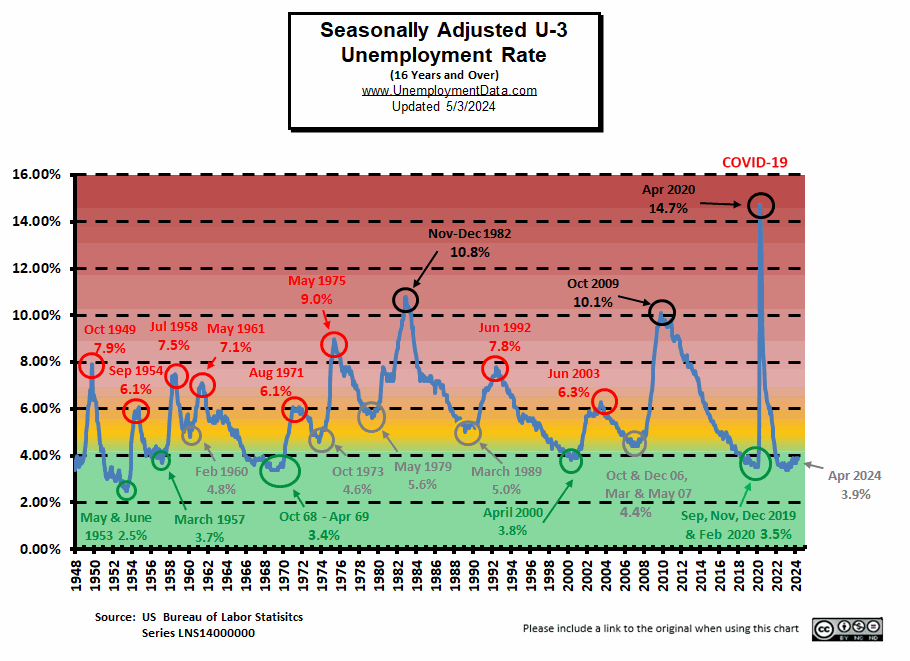When we consider markets, we typically think of commerce – the buying and selling of goods and services, international trade, investing, supply and demand. Markets are the backbone of our economy. Almost everything has a market – food, medical care, toys, films and entertainment, weapons, drugs, stocks. But there is one market that surpasses them all in importance, without which no other market could exist – the labor market.
Labor is crucial for commerce. Without people to produce goods and services, commerce would cease to exist. Businesses rely on labor to function, creating a demand similar to that for material goods and services. In other words, the labor market is the foundation on which all other markets depend.
In an age where everyone feels the need to have an opinion on just about everything, many people consider themselves “economic experts.” However, when everyone has an opinion on a complex issue, most of those opinions are bound to be wrong. Economics is a prime example of this, filled with false consensuses. With that in mind, let’s go ahead and debunk some common myths about the history of the American labor market, from the Industrial Revolution to the present.
Common Myths
When examining the history of America’s labor market, we must set ideology aside. Certain truths can be inconvenient when they contradict deeply held beliefs. Economics and politics are so intertwined that stating an objectively factual statement can lead to derision depending on the company one keeps. Contemporary Western society collectively holds onto many dogmas and assumptions that are patently incorrect.
One area of contention is the Industrial Revolution and the Gilded Age, often subject to criticism regarding the relationship between industry and climate change, income inequality, exploitation, and corruption by capitalism’s so-called excesses. Another common talking point is that the workforce suffered greatly from the Industrial Revolution, and it was only through the rise of unions that the labor market diversified, living standards improved, and the labor market thrived. However, none of these statements are true, as Nobel Prize-winning economist F. A. Hayek discusses in his 1954 book Capitalism and the Historians.
Hayek sets the record straight regarding the effects of the so-called “Robber Barons” on American labor markets during the Gilded Age. Many contemporary historians argue that wealthy industrialists exploited the poor through industrial centralization, forcing urban workers to work for multimillion-dollar corporations that were intent on exploiting their labor (false claims that we often find in many modern classroom textbooks). They also claim that these corporations coerced rural populations to move to crowded, polluted cities for work, leaving them worse off. However, Hayek reveals that this is far from the truth. While the consolidation of industry did lead to spikes in the labor market and increased productivity, there is no correlation between this and corporate exploitation.
The Industrial Revolution did not result in the poor getting poorer and the rich getting richer
The Industrial Revolution did not result in the poor getting poorer and the rich getting richer due to “capitalist oppression”. In fact, the generation of wealth was a result of a symbiotic relationship between the emerging industrial labor market and innovative industrialists. While the industrialists did become richer at a faster rate than the average laborer, unskilled workers also experienced significant increases in wealth due to the industrial economy.
The mass exodus of poor rural farmers to urban industrial centers was voluntary. Life in the countryside was more difficult and dangerous compared to urban life. The growing labor markets in major cities attracted rural folk, as there was a rise in demand for unskilled laborers. These workers were often taken care of by the firms that employed them.

While labor unions played a minor role in improving working conditions and the wellbeing of workers, the impact of private industry far outweighed that of the labor movement. Early labor unions were generally hostile towards the growth of the industrial labor market and implemented barriers of entry to protect their own interests, discriminating particularly on the basis of race and religion. Labor unions were reactionary in nature, a backlash against the progress of the Industrial Age. For example, organized labor largely opposed technological innovations that would ultimately benefit both worker safety and economic productivity. The policies they pushed for reduced the real wages of their members. They initially opposed concepts like the five-day workweek and company benefits, wanting to control the conditions themselves, as well as restrict the labor supply.
Workplace conditions and benefits improved before unions actively endorsed them. The labor laws passed by Congress in the first half of the 20th century had little impact, as many private businesses had already banned exploitative practices. Businesses recognized that treating employees well led to increased productivity and economic growth. This resulted in higher employment rates and a rise in the net-wealth of American citizens. For example, Henry Ford decreased hours, doubled wages, and began providing various employee benefits nearly a decade before Congress passed legislation requiring such.
F.A. Hayek and his fellow Austrian Economists present a more accurate picture of the consequences of the Industrial Revolution and the individuals, movements, ideas, and innovations that emerged from it. Their valuable insights provide a far more accurate understanding in contrast to most mainstream contemporary and modern economic historians.
About the Author:
Jacob Swartz is a writer and independent content creator based out of the Washington D.C. area. Jacob holds a bachelors in English, economics, and political science from George Mason University. He runs “The Politicrat” YouTube channel, where he conducts interviews and produces long form video content. He has also made appearances on programs such as “The JBurden Podcast” and “The Pete Quinones Show”, and has written for the “Old Glory Club” Substack.
This article originally appeared here and has been reprinted under the Creative Commons license.
Images Created by Meta A.I.



 As the 1960s Bob Dylan song says
As the 1960s Bob Dylan song says 